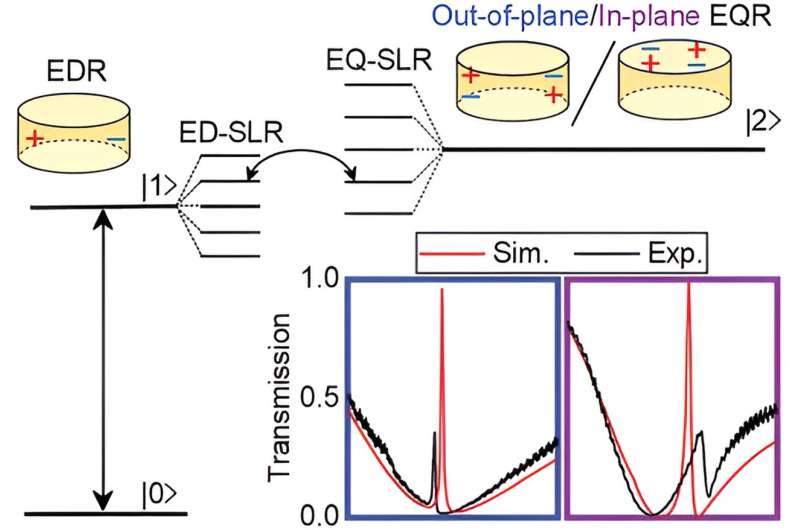This article has been reviewed according to Science X's editorial process and policies. Editors have highlighted the following attributes while ensuring the content's credibility:
fact-checked
peer-reviewed publication
trusted source
proofread
Researchers slow down light in metasurfaces with record low loss

The speed of light can be intentionally reduced in various media. Various techniques have been developed over the years to slow down light, including electromagnetically induced transparency (EIT), Bose-Einstein condensate (BEC), photonic crystals, and stimulated Brillouin scattering (SBS).
Notably, researchers from Harvard, led by Lene Vestergaard Hau, reduced light speed to 17 m/s in an ultracold atomic gas using EIT, which sparked the interest in exploring EIT analogs in metasurfaces, a transformative platform in optics and photonics.
Despite the benefits, slow-light structures face a significant challenge: Loss, which limits storage time and interaction length. This issue is particularly severe for metasurface analogs of EIT due to scattering loss of nanoparticles and sometimes absorption loss of materials.
In a study published in Nano Letters, Dr. Li Guangyuan and colleagues from the Shenzhen Institute of Advanced Technology (SIAT) of the Chinese Academy of Sciences introduced a novel strategy to realize a metasurface analog of EIT while effectively suppressing losses.
Unlike conventional metasurface analogs of EIT induced by coupling between two localized resonances supported by closely packed meta-atoms, or between localized and collective resonances, the researchers proposed a new type called "collective EIT-like resonance," which is induced by the coupling between two collective resonances—a Mie electric dipole surface lattice resonance (ED-SLR) and an in-plane or out-of-plane electric quadrupole SLR (EQ-SLR).
Using silicon metasurfaces with a 100 nm-thick nanodisk array, they demonstrated collective EIT-like resonances with a quality factor exceeding 2,750, more than five times the state-of-the-art. In practical terms, light passing through the silicon nanodisks can be slowed down by more than 10,000 times, with a reduction in loss by more than five times compared to existing methods.
Dr. Li explained the departure from the conventional belief that metasurface performance depends on how closely meta-atoms can be placed. The researchers explored the extreme regime of zero distance between meta-atoms, essentially merging them into one. Unlike conventional methods, their approach allowed the tuning of surface lattice resonances to overlap spectrally, enabling the realization of metasurface analogs of EIT.
Furthermore, the researchers demonstrated a BIC-characterized collective EIT-like resonance utilizing the transition between the in-plane EQ-SLR and the bound state in the continuum (BIC). This suggested the potential to slow down light by an arbitrarily large factor while maintaining a growing quality factor.
The study holds promise for photon manipulation with greater flexibility and potential applications in slow-light photonic chips.
More information: Xueqian Zhao et al, Ultrahigh-Q Metasurface Transparency Band Induced by Collective–Collective Coupling, Nano Letters (2024). DOI: 10.1021/acs.nanolett.3c04174
Journal information: Nano Letters
Provided by Chinese Academy of Sciences





















